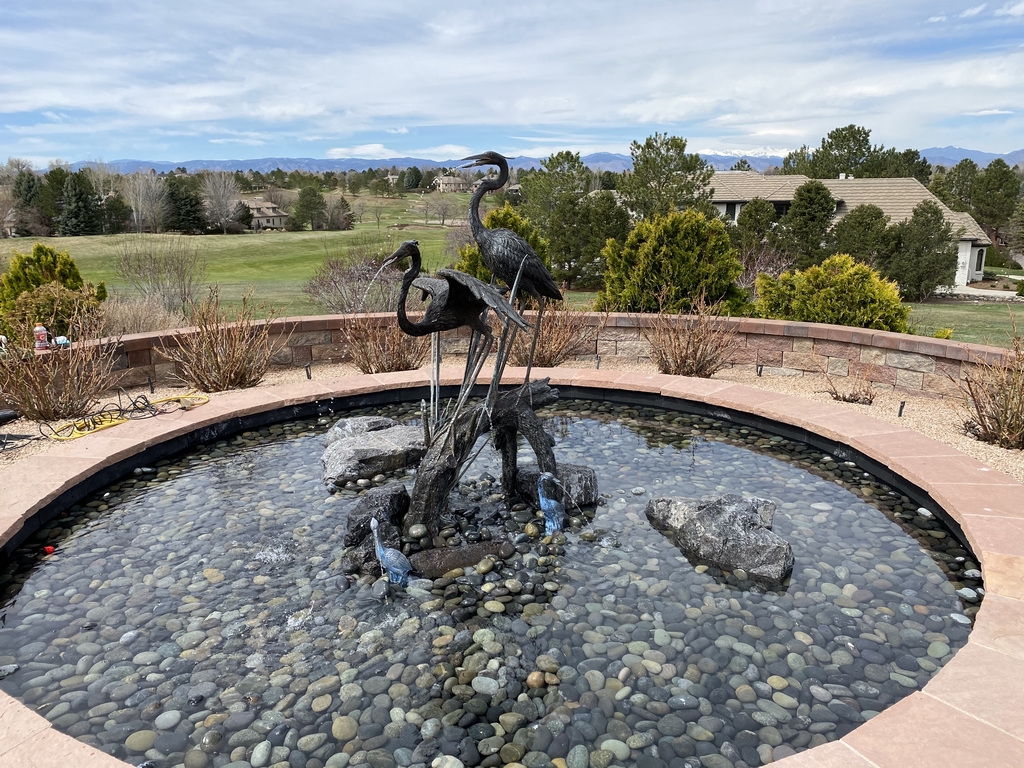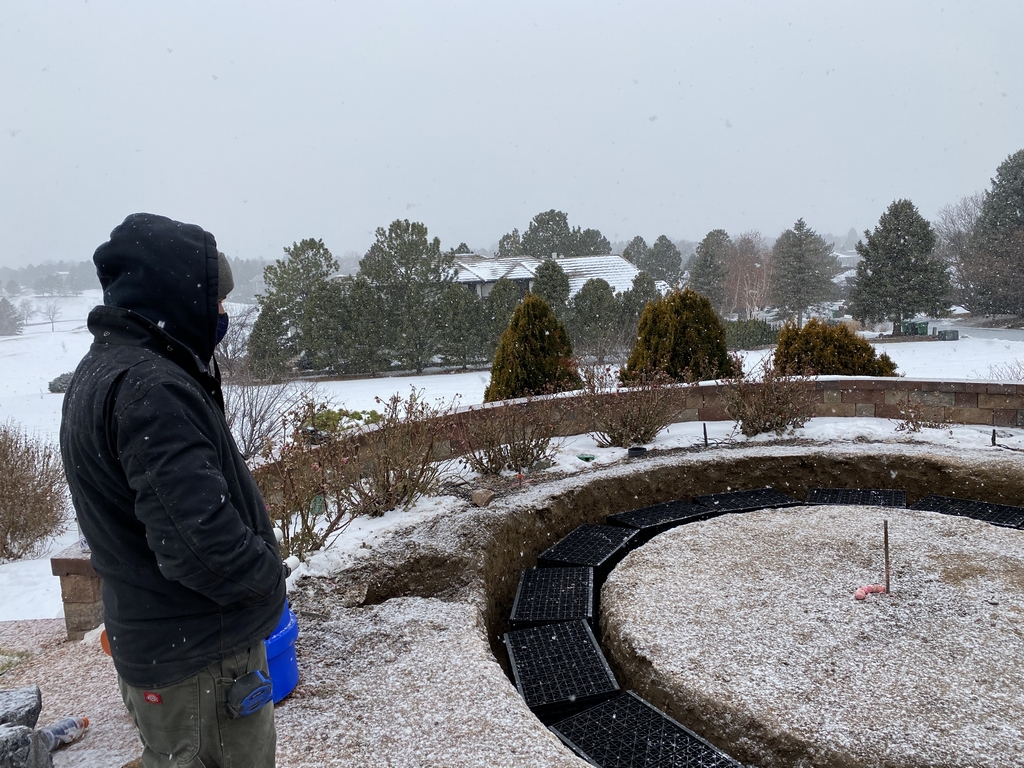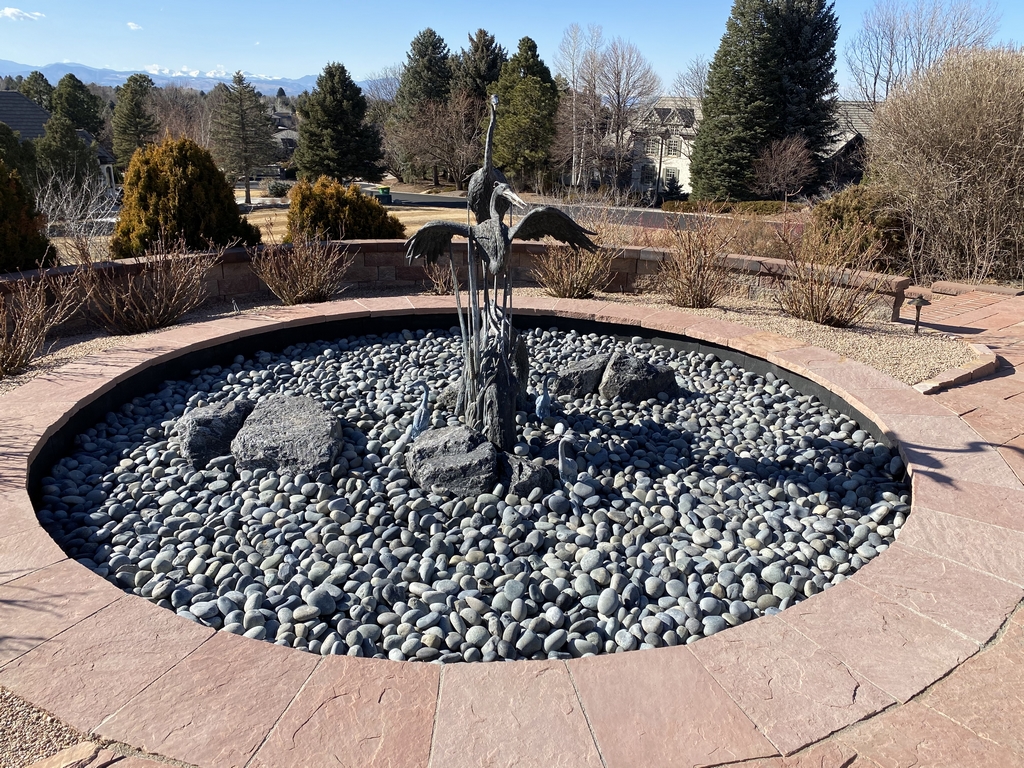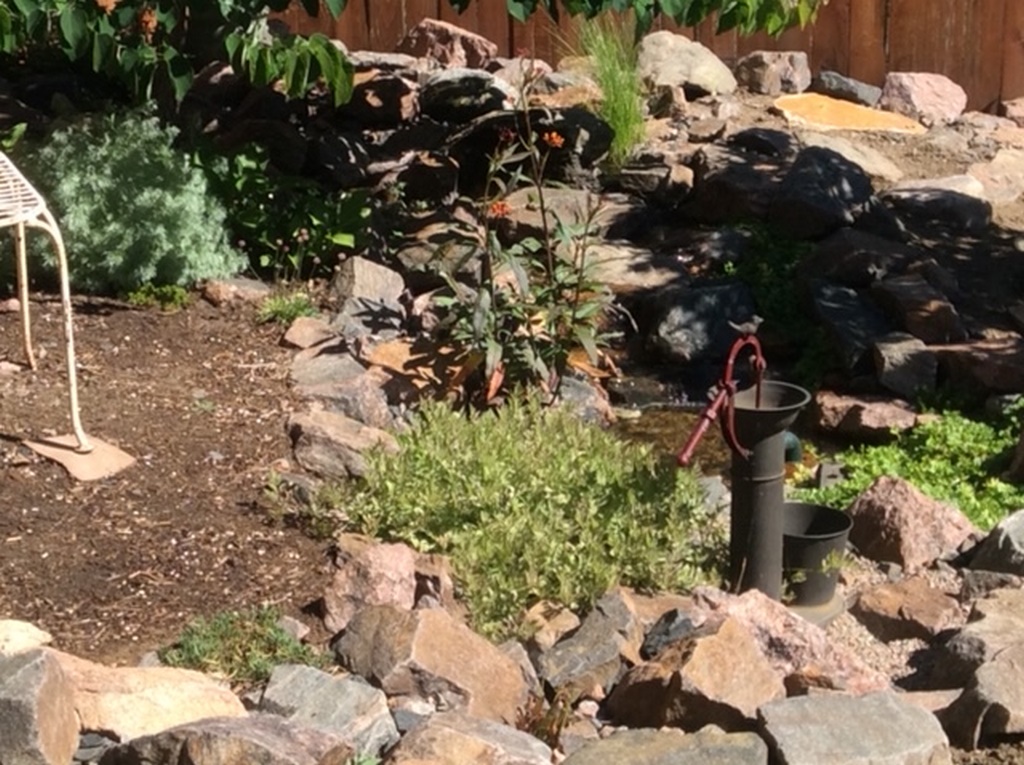Beautiful Wet or Dry


Watershaping and water shortages are a problematic combination, and one that can require significant levels of adaption. According to Dave Garton, working the water-strapped Colorado market has meant creating features that look just as good dry as they do when in full flow. The best place to start, he says, is studying how nature looks when waters run dry.
By Dave Garton
We all know that water is a precious resource. We also know that fact comes into fuller focus when there are shortages. As the western U.S. contends with varying levels of drought, I believe it behooves us to think about water in a different way. Its presence is not always a given and perhaps we should think in terms of designing accordingly.
Given that watershaping in all its forms is centered on the availability of water, designing with scarcity in mind may seem quite the counterintuitive challenge. As is so often the case, we can turn to nature for answers.
For years I’ve gone into the Rocky Mountains to spend time next to rivers, streams and waterfalls. In the spring, the water practically rages through the landscape, driven by snow and ice melt, creating tremendous drama and splendor. When I return to those same places in the fall, the flow might be only a trickle. There’s a completely different character, and sound, but it’s still equally beautiful.
That simple comparative experience resides at the heart of my waterfeature designs, which are made with different personalities in mind. Now, when I build waterfeatures, I deliberately set up the system so that the homeowner can have a spring flow or a fall flow using a manifold and valving.
Creating a system that changes flow rates is not difficult, the real trick is designing the feature itself so the different flow rates make sense. I plan very deliberately for where the water will go and how it will behave for both the spring and fall scenarios.
In a waterfall, for example, the spring flow will cascade over the entirety of rock structures, creating a vigorous and energetic scene. By contrast, the trickle flow will retreat in crevices and even small caves where it virtually disappears from view, but creates an entirely different and often very tranquil sound.
Of course, in a built environment, clients can have their small version of Niagara Falls or the small trickle, and anything between, anytime they want. These days, they should also be prepared to enjoy their watershapes sans the water entirely.
DOWN TO NOTHING
Considering the idea of perfectly dry fountains is in a very real sense, the most extreme version of the fall trickle. There are times in nature when we encounter dry stream beds and can only visualize water cascading over the rocks and through the channels its carved over countless years. We instantly imagine the beautiful sights and sounds it generates. We are left with the direct visual evidence of water’s presence, even though there is, in that moment, no water at all.
In some places, the only time there is water is in the spring, the rest of the time, it’s dry, there with all the rock structures and plant material that you associate with a riparian area, there in its perfect chaos, in nature, dryness is a common condition, and one we can observe and emulate to great effect.
There’s no question that “dry watershapes” can be viewed as a grand compromise, given how much we humans crave water in our lives. Yet, the reality is that dryness is also an inevitable part of nature and if you study how nature “constructs” its dry features and try to mimic some of those details in a built feature, the results can remarkably satisfying.
THE SOUND OF SILENCE
I’ve long believed that the music of moving water is on an equal footing with the visual. When I’m in the mountains, I close my eyes and allow the sound of a stream or waterfall overtake my mind. There’s such variety and complexity, so many different types of beautiful noises. Imparting that magic in human-made watershapes is one of the great joys of the work, and often a big surprise to clients.
When we talk about designing features for complete dryness, we are letting go of that entire aspect of watershape design, knowing that the feature will fall completely silent when the water is gone.
All the more reason that watershapes should be visually beautiful when they are absent H2O.
At this moment, water shortages are becoming what some describe as a new normal, and in so many ways, it’s up to us to adapt. Here in Colorado, the only water that comes into the state is precipitation mostly in the form of snowfall. Over the years, the state has delt with that constant scarcity by enacting some ridiculously arcane, and I would say even draconian, water laws. For example, it was once illegal to even collect the water that comes off your roof. (That’s been relaxed to a very few gallons.) Basically, you cannot do anything to capture any water naturally flowing over and through the landscape.
Water rights in this state are more valuable than gold. That regulatory condition means that watershapers are forced to adapt and make the most of the water we have available. Designing for the possibilities “dry waterfeatures” is one of the ways we can gracefully contend with nature and the state government.
Concerns about drought aside, working a seasonal market, approximately half of the features I build do not run in the winter. It only makes sense to think in terms of making them look good dry. That goes for ponds, streams and waterfalls, as well as more architectural fountains. That challenge is made easier by the fact that most of my features only hold 500 to 1,000 gallons. Because water is such a precious resource, I firmly believe in making the most of it and I’ve found that you can create extremely satisfying features with a small volume of water by creating visually interesting and beautiful structures that look great whether they have water in them or not.
Working with smaller volumes makes it easier to give the water somewhere to go. I prefer creating some type of reservoir underground where the water is protected from elements and not wasted to evaporation. When you contain the water, as opposed to draining it, similar to the way you would a swimming pool, you’re not wasting the water and by keeping it protected from the elements, you’re maintaining useable water quality.
EXPRESSING CHARACTER
Naturally, the type of feature largely dictates how you go about making it look good year ‘round.
Still ponds – where the flow is present in a very gentle upwelling of water that does not disturb the surface – are very shallow with a rock bottom and typically low-profile rock structures around them. Using decorative rocks the bottom, perhaps with different colored and sized stone material, is a way to add visual interest, whether wet or dry.
I’ll place specimen rocks underwater so that when the water disappears, you’re left with a decorative basin that doesn’t look like a bathtub. You want to select material that has character and is distinct. That way, when it’s turned off, the pond, or ponds, look like part of the landscape.
With fountains, the same basic principle applies, you want it to look comfortable in the landscape without water. Fountains tend to look forlorn and forgotten when they’re dry, especially if the water itself is the only visually interesting element. That’s why in situations where you know the feature will be dry, it makes sense to includes some type of art piece that makes an aesthetic statement, wet or dry.

The circular feature pictured here with the bronze crane sculpture in the center is a great example. When it’s dry, the circular basin work as a setting, or frame, and no matter the time of year or state of relative wetness, the cranes create a beautiful focal point.
Streams and waterfalls have the advantage of being visually interesting naturally with or without water, and the more authentic they look, the more beautiful they become. I choose rocks for both that have interesting striations, as well as moss and lichen and oxidized surfaces. And most of all, the pieces I place in the water course, must have some evidence that water has moved over them and sculpted the surface.
Some people think that the way to create a visually impactful waterfeature is to build up a tall pile of rocks with water coming out the top. The exact opposite is true. On a flat yard I build two ponds with about eight to 10 inches elevation change. It gives you the option of bringing the water over that edge in all sorts of different ways, and it will always look natural. And when it’s dry, the rock structures and pond still look like they belong in the landscape.
CLIENT DIALOGUE
One of, if not the, greatest challenge is the way that designing for shortages impacts client discussions.
It’s amazing the spectrum of ideas you run into when first discussing a waterfeature with clients. When it comes to water usage some are dialed in right from the start and are onboard with the idea of building with conservation in mind. That makes it easy.
But then there are other clients who have been imaginint on a grand scale what their feature will be. By the time I’m involved some of these homeowners are imagining a watershape with raging rapid where they can go kayaking. It’s very common that people conjure outsized designs, and they can be somewhat disappointed when you have to bring them back to reality.
Suffice it say, I am often balancing the need to calibrate expectations, while at the same time keeping them excited and happy about the idea of including a waterfeature on their property. Those conversation unfold much like this discussion, where you consider the necessity and the aesthetic possibilities of designing with dry times in mind.
Dave Garton, owner of Lawnchair Watershapes in Denver, is an expert pond and stream builder, as well as an in-demand speaker and coach.











